How To Set Up Rainwater Harvesting
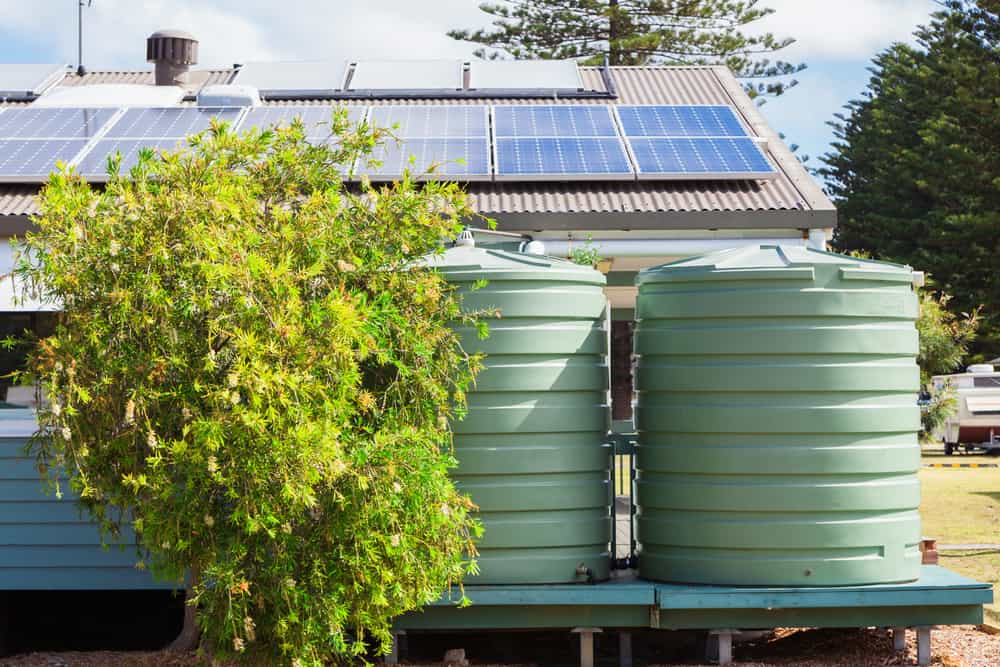
Rainwater harvesting is the aboriginal practice of collecting and storing atmospheric precipitation for later apply.
This technology can be traced back some 12,000 years in human history, and information technology makes just every bit much sense today to have reward of a precious resource that freely falls from in a higher place.
The simplest rainwater harvesting system involves a basic rain butt situated side by side to your abode.
Using a catchment surface – commonly a roof – to aqueduct rainfall and melted snow into the gutters, the rain is gravity fed into a downspout connected to the pelting barrel.
Filters and screens can be used to help go along debris out of the collected water.
A spigot is installed at the base of the butt to provide access to the water and boosted barrels tin be continued to increase chapters.
Of course more complex systems exist, including year-circular, indoor setups for the whole abode.
Nether these more avant-garde setups, untreated rainwater could exist piped into the dwelling house to supply waste matter water for toilet flushing – which can help reduce water bills by 30%.
Or, rain is purified and used to supply clean water for drinking, laundry, showers, dishwashing, cooking, and cleaning.
The nice thing nearly rainwater harvesting is y'all can commencement small and scale up. And a first fourth dimension DIY setup is inexpensive and will just eat up well-nigh a half hour of your time.
Why Save Rainwater?
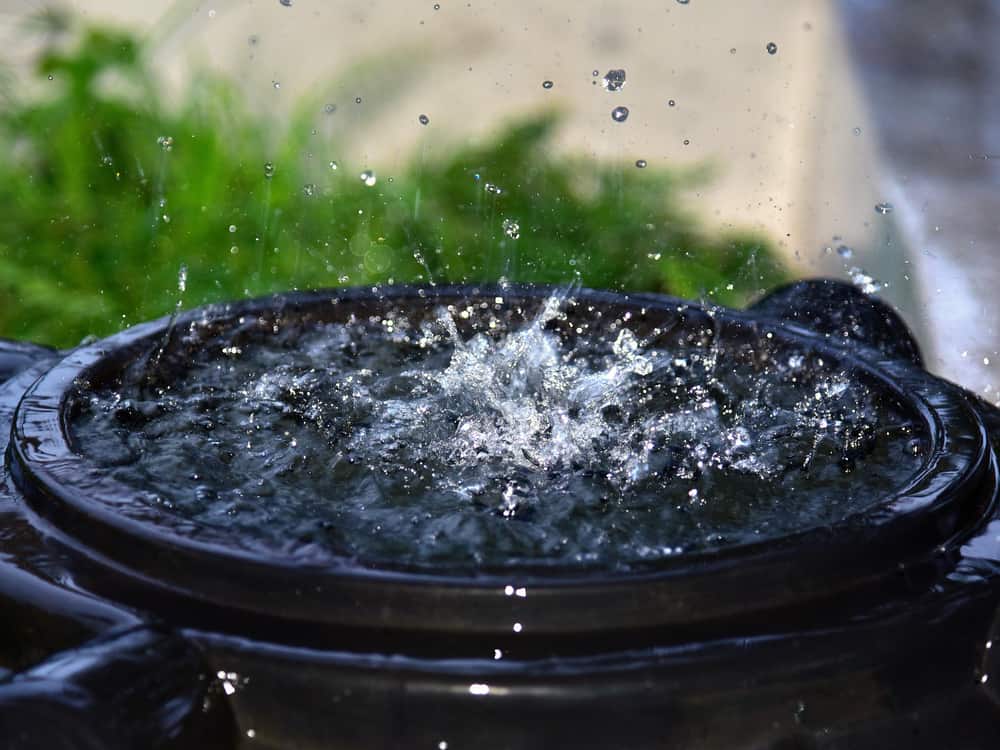
Information technology'southward a Free Source of H2o
The clearest benefit of rainwater harvesting is information technology allows yous to obtain a relatively clean source of water, for free.
This signal is specially vital when fourteen million households in the United states of america struggle to pay their h2o bills today.
Adapting to climate modify and replacing crumbling h2o infrastructure across the nation ways the cost of water is expected to rise by 41% past 2022, according to a 2022 paper.
This bourgeois estimate means that one 3rd – or 41 million – households may not be able to afford make clean water.
Rainwater is a High Quality Source of H2o
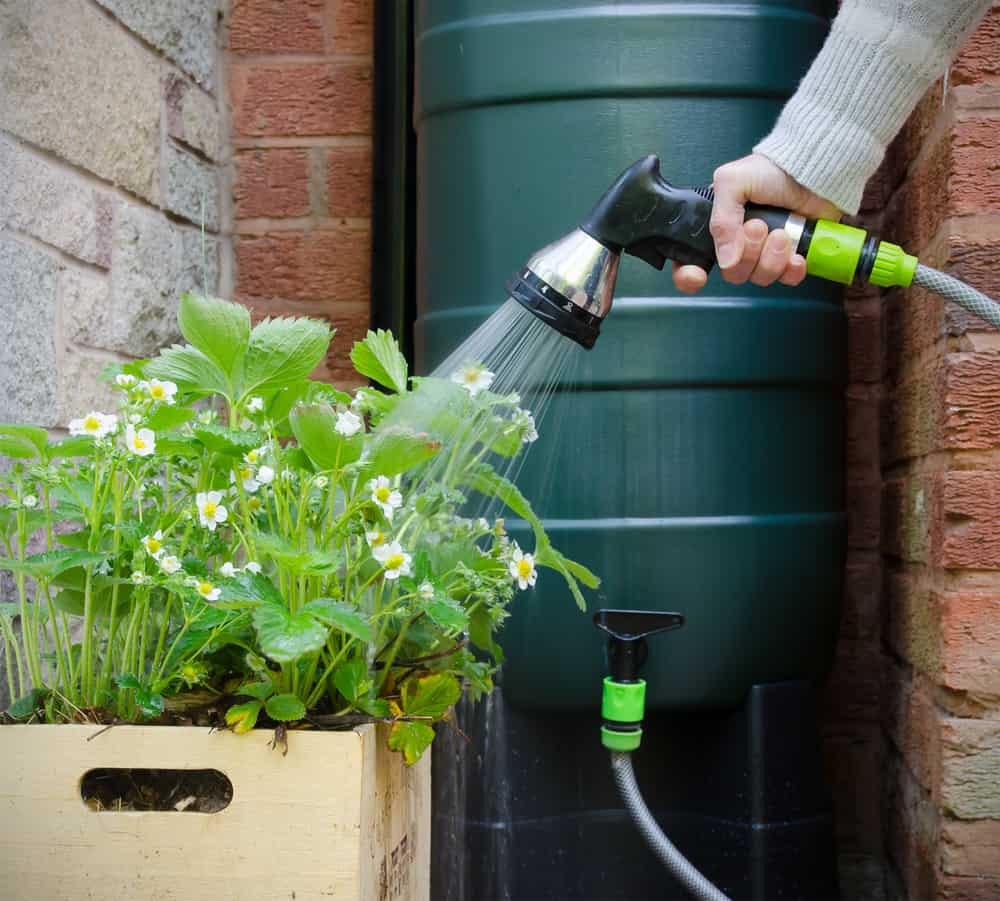
Rainwater is naturally soft and free from chlorine, fluoride, and other chemicals typically added to the municipally-treated water supply. Information technology is also mineral free and contains no sodium.
When collecting rainwater for outdoor, non-potable uses, it requires no treatment.
You lot tin apply information technology as y'all collect it to h2o your garden, fill up a pool, swimming, or other h2o feature, for outdoor cleaning and power washing, to wash your vehicle, and to breast-stroke your pets.
While rainwater is adequately make clean, it can pick up bacteria, viruses, and cysts from the air or when it makes contact with the roof, piping, or tank.
Rainwater used for drink purposes must commencement be treated with a fairly simple disinfection process.
It'due south an Independent Water Supply
Preparing at present for a future where water is scarce is never a bad idea.
Rainwater harvesting allows you to become more self sufficient by having your own independent water supply.
In times of drought or when clean water becomes as well plush, rainwater can be used as a supplemental source that can assistance ease need on well or city h2o.
It can likewise be used every bit a backup source of water in emergencies.
It Promotes H2o Conservation
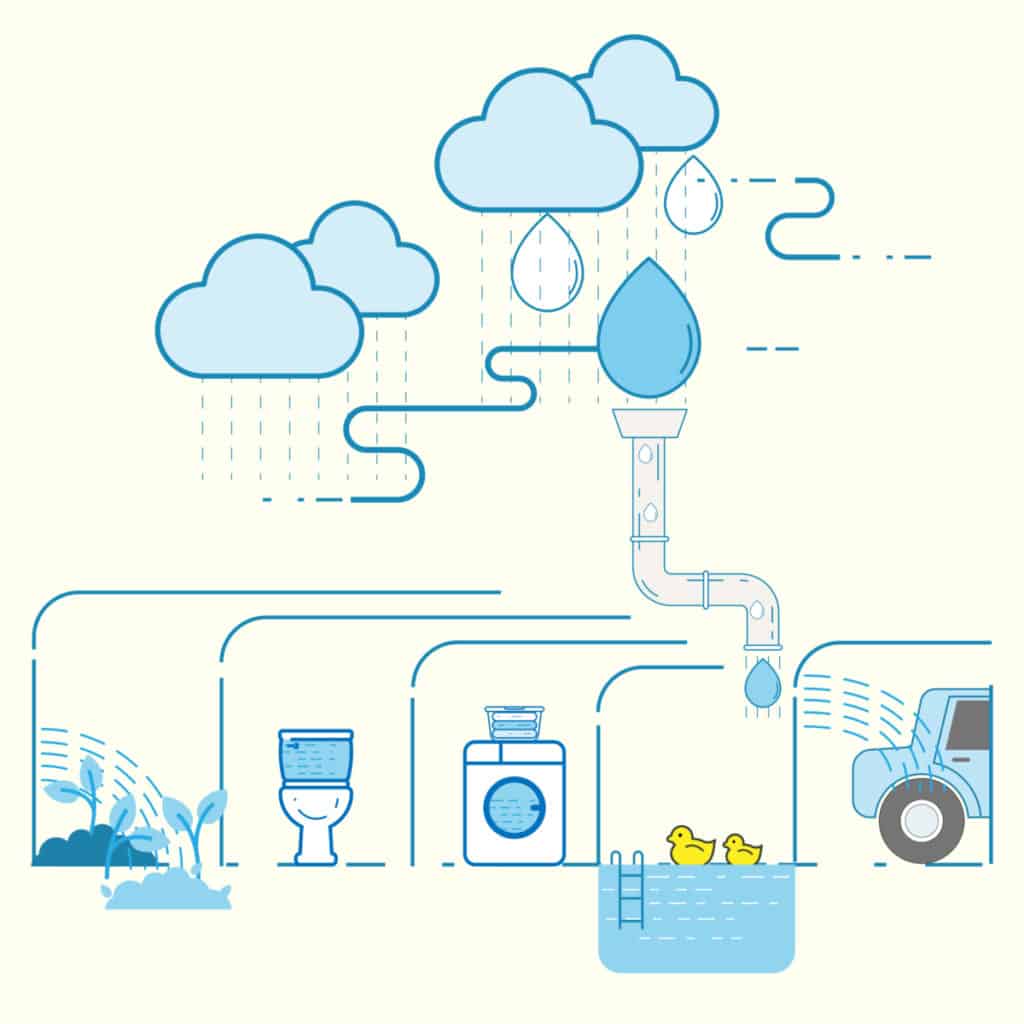
Living in a part of the world where h2o has been cheap and abundant, endlessly flowing through the twist of the tap, means that we have get disconnected from the issues of water supply and are less mindful of wastefulness.
Consider that, on average, betwixt 33% to 50% of domestic h2o apply is practical to lawns and gardens each year and that less than 3% of potable h2o is actually used for drinking.
But by becoming directly involved with our ain water supply, as with rainwater drove, water consumption is consciously reduced.
Before relying on rainwater, either wholly or partially, it's wise to seal whatever leaks and install dual flush toilets, low flow showers, and high efficiency washing machines and dishwashers to reduce consumption past a further twoscore%.
It Lessens Demand on Groundwater
Groundwater is water plant hundreds of feet beneath the world's surface.
It supplies aquifers and wells, and more than 1 tertiary of the world'due south population relies on groundwater as its sole source of drinking h2o.
Although groundwater is plentiful today – the estimated amount is 5.6 meg cubic miles, over a thousand times more all the world'south lakes and rivers combined – it is being used much faster than it can be replenished.
Groundwater is recharged past rain and melted snow that penetrates deep beneath the land surface, but the process is quite slow.
A 2022 study found that just 6% of the earth'due south groundwater was replenished over the last fifty years.
It Can Minimize Flooding and Stormwater Runoff
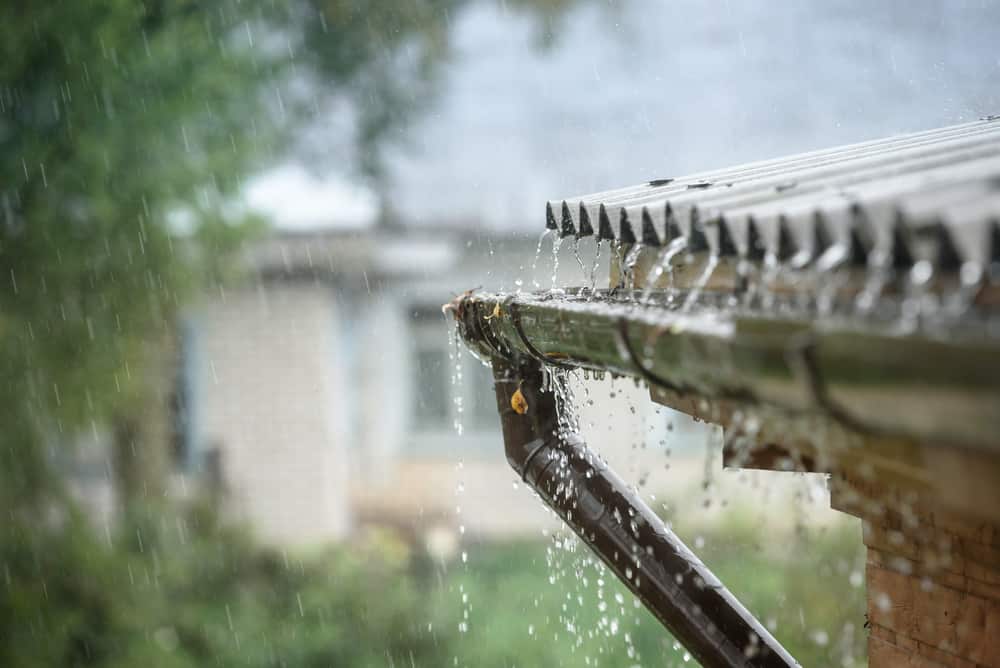
During heavy rains, rainwater harvesting can assistance preclude your habitation from flooding since it diverts water away from the ground and into storage.
This tin be invaluable if you lot happen to reside within a flood plainly or a low lying area.
Rainwater harvesting can as well reduce water pollution caused by stormwater runoff.
More than crucial in urban environments, where non porous surfaces similar roads and parking lots preclude pelting from penetrating the ground, stormwaters pick up oils, chemicals, and other pollutants and are released into nearby rivers and streams.
How Much Rainwater Tin Be Collected?
The pitter patter of rain may not seem similar much each drop certainly adds up. Every inch of rainfall over a 1,000 square foot roof will provide around 623 gallons of water.
To determine how much water you can collect, use this uncomplicated formula:
- i" of rainfall x 1 foursquare foot = 0.623 gallons.
For a better thought of what your rainwater collection potential is, check the NOAA Climate Atlas for average annual precipitation for your specific location.
In general, you tin can wait to collect around 75% to 80% of the actual rainfall at a given time.
Rain collection efficiency is impacted past roofing material, branches that overhang the home, and air current.
Is Rainwater Harvesting Legal?
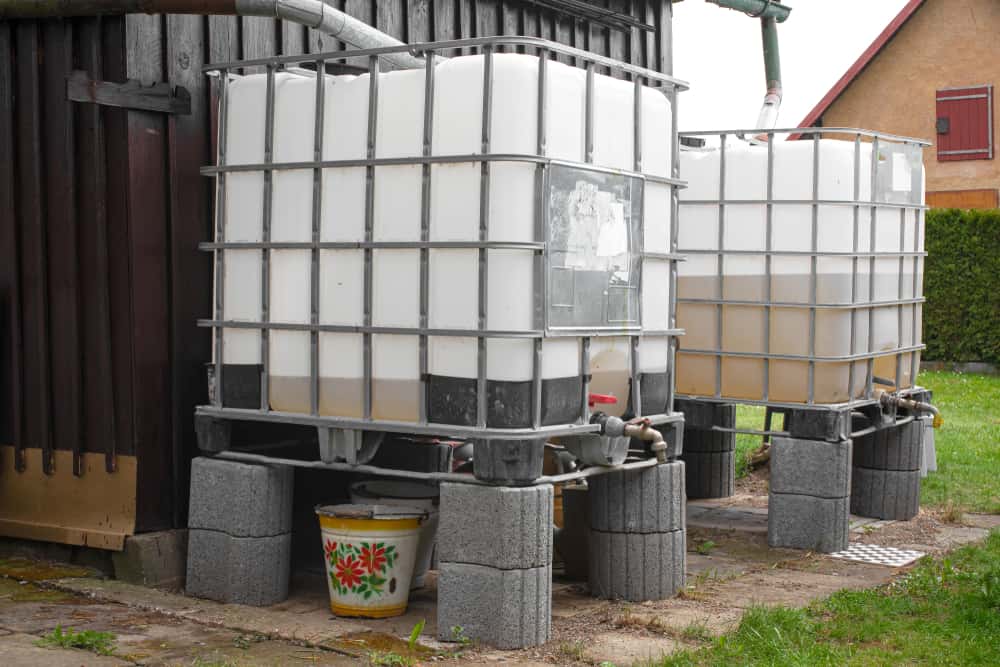
Rainwater harvesting is legal in all l states. Withal, that isn't to say in that location aren't rules and regulations to follow, depending on the state.
Colorado, for example, is one of the most restrictive – rainwater collection is limited to two rain barrels with a combined chapters of 110 gallons, and is for outdoor use only.
Merely other areas actively encourage rainwater harvesting in residential settings.
Florida, Delaware, and Maryland provide tax incentives and reimbursement programs to help cover the price of setting upwards a home rainwater collection system.
Considerations Before Setting Up a Rainwater Collection Organization
Setups tin can range from the ridiculously simple to the amazingly complex. Before gear up upwardly, you should consider:
Tank Size
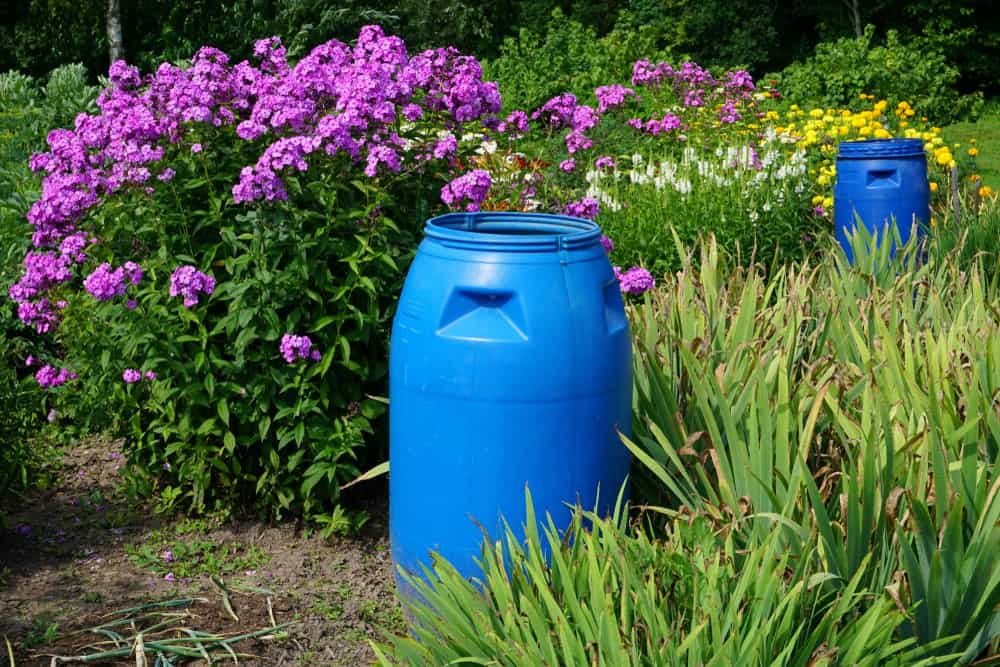
In areas where precipitation patterns are consequent, smaller tanks would be sufficient for landscape irrigation and other outdoor uses.
However, in places where rainfall is seasonal, or yous desire a year-round, drink setup, you would demand to calculate your current water usage counterbalanced against estimated rainfall drove for each calendar month of the twelvemonth.
Covering Textile
The ideal roofing materials for rainwater drove are mill-coated enamelled steel, terra cotta, concrete tile, glazed slate, and zinc-coated galvanized metal.
These materials are the easiest to maintain and are the safest to utilize in both drink and non-drink setups.
Avoid modernistic asphalt and fiberglass shingles which typically come coated in anti-fungal chemicals to forestall the growth of moss.
Additionally, potential toxins tin can be institute in cedar shakes, cedar shingles, Bitumen, and composition roofing.
These types of roofing materials are not suitable for potable water uses and may even impairment your plants.
Gutters
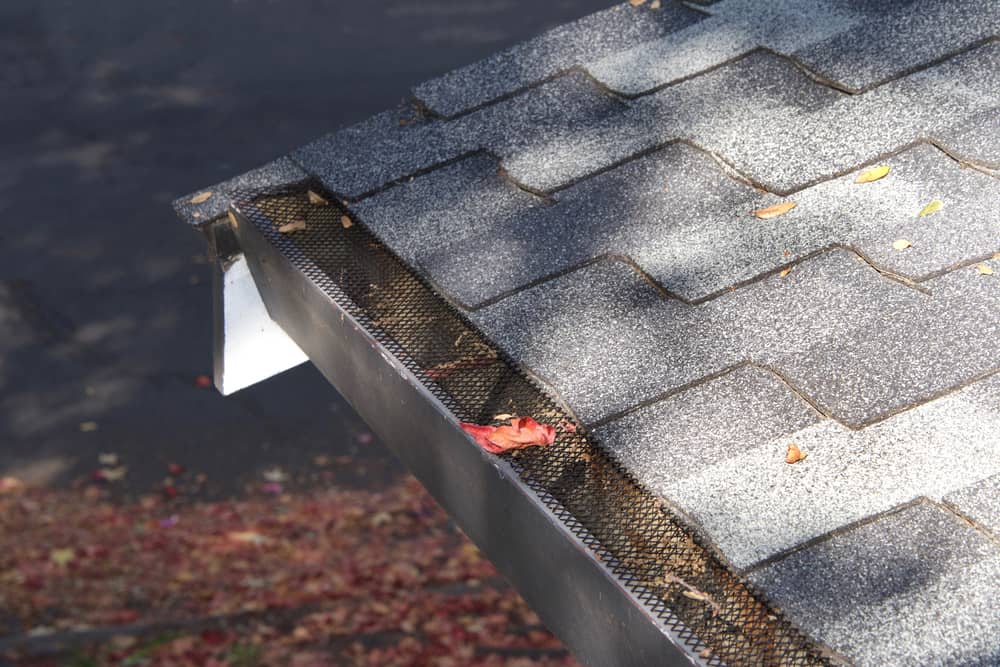
Gutters made from coated aluminum and vinyl are the best selection for rainwater collection. Galvanized steel gutters are suitable for non-potable systems.
Avoid using gutters made with copper or lead materials.
Gutters should be at least 5 inches wide to handle summit water menstruum. Ensure gutters completely dry out out between rains by installing them with a minimum 1/16" slope per human foot.
Adding gutter covers or debris screens improve h2o quality while reducing the need for frequent gutter cleaning.
8 Rainwater Harvesting DIYs
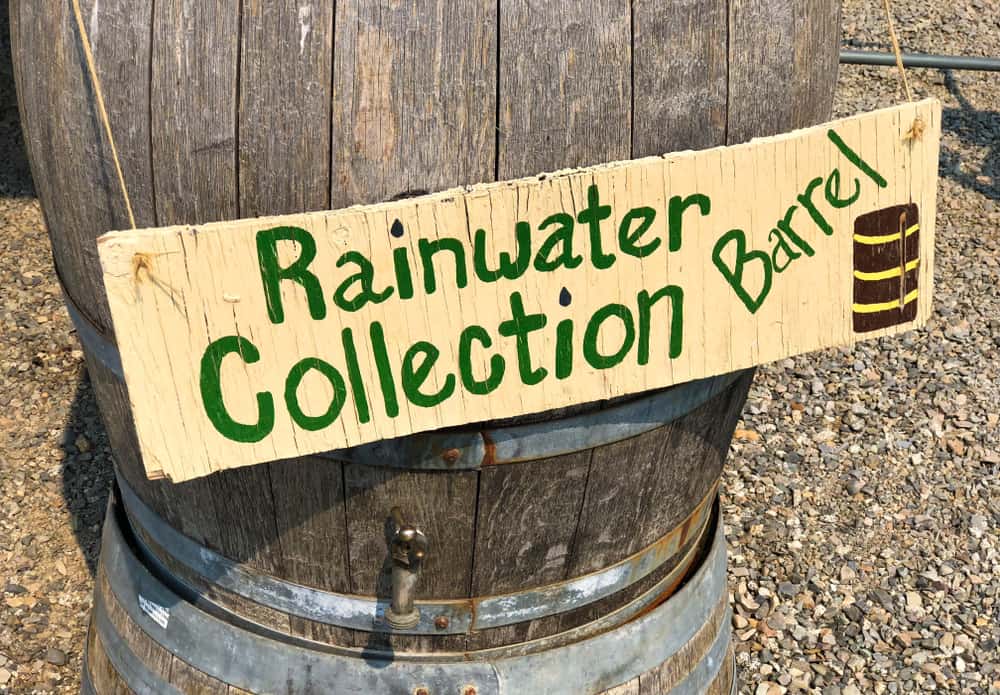
Hither are some non-potable outdoor rainwater collection systems, from the super unproblematic to slightly more complex:
one. Garbage Tin Rain Barrel
Possibly the cheapest and easiest fashion to become started, this elementary setup requires a 32 gallon plastic trash tin can with hat, a brass faucet with two threaded washers, and a flexible gutter downspout.
Get the tutorial here.
2. A Prettier Rain Butt
A bit more than aesthetically pleasing, this rain barrel how-to includes some extras similar adding a mesh screen to the downspout and including a hose attachment to handle any overflow during heavy rains.
Get the tutorial hither.
3. The Enclosed Rain Butt
For a discrete rain collection setup, the pelting barrel is enclosed within a study, wooden trounce.
It's a two day project that will cost effectually $150.
Once completed, slap a glaze of pigment on information technology to make information technology blend even more with its surroundings.
Get the tutorial here.
iv. Standalone Rain Catcher
When yous lack a suitable catchment surface, this standalone rain barrel blueprint incorporates a tarp on top to grab the rain, similar to an inverted umbrella.
Get the tutorial here.
five. Rain Barrels with PVC Piping
In this DIY, a series of PVC pipes are used to connect 2 or more rain barrels, with overflow piping and garden hose attachment for irrigation.
Since the pipes are drilled into the underside of the barrels, and the barrels sit atop a wooden stand up, about of them are neatly hidden from sight.
Get the tutorial here.
half dozen. 275 Gallon Rainwater Tank
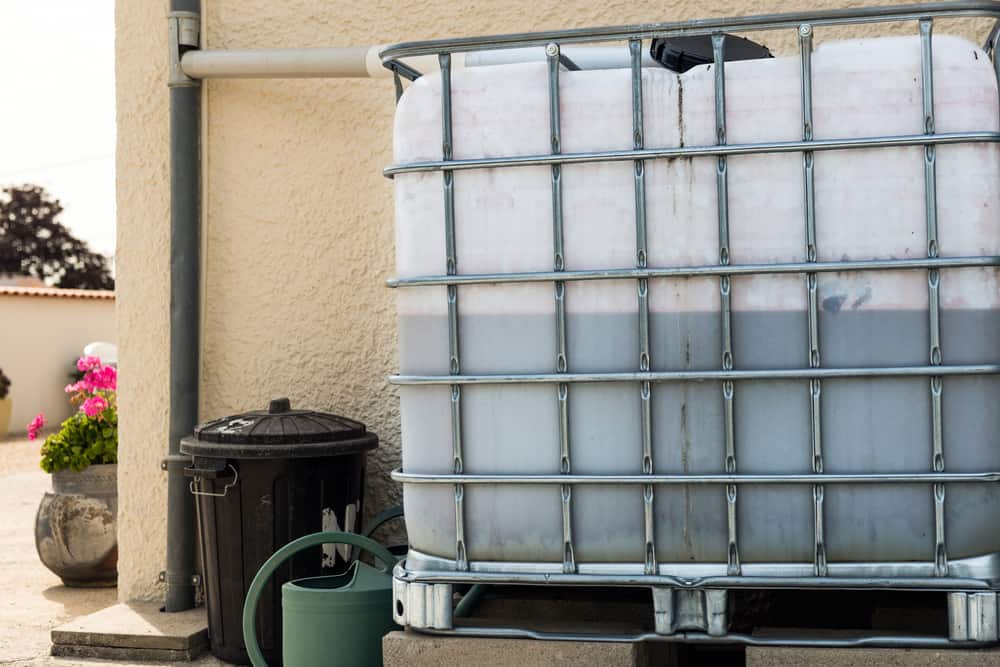
Using a recycled intermediate bulk container (or IBC), this projection increases rain drove volume to 275 gallons, all in one container.
Watch the accompanying videos to see how it's done, every bit well as the final update where they added ii more than IBCs in an enclosure that helps the setup blend into the building.
Get the tutorial here.
7. Vertical Rain Barrel System
When you would prefer to build "up" rather than "out", this system situates the rain barrels so they lay horizontally, allowing them to be stacked on top of each other, supported with a wooden frame.
Go the tutorial here.
eight. Homesteader Rain Collector
Best for big gardens that have a high water demand, this 2,500 gallon set upwards is located adjacent to the befouled and includes extras similar a water pump, overflow organisation, and first flow diverter that flushes the first few gallons of collected rain to prevent dust and dirt from accumulating in the cistern.
Become the tutorial here.
How To Set Up Rainwater Harvesting,
Source: https://www.ruralsprout.com/rainwater-collection/
Posted by: stroudthimpiend99.blogspot.com


0 Response to "How To Set Up Rainwater Harvesting"
Post a Comment